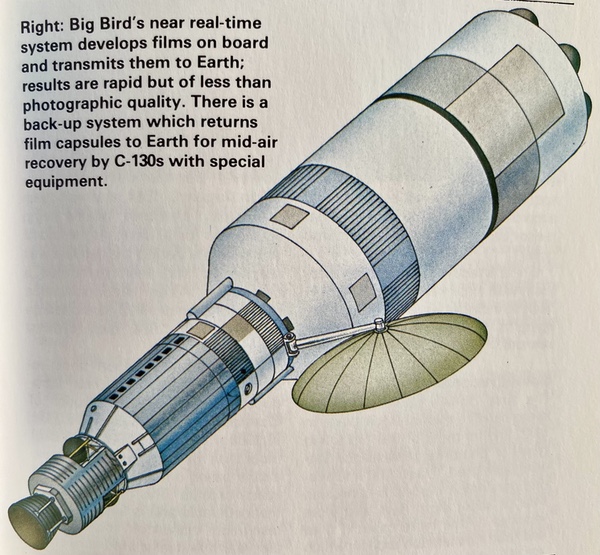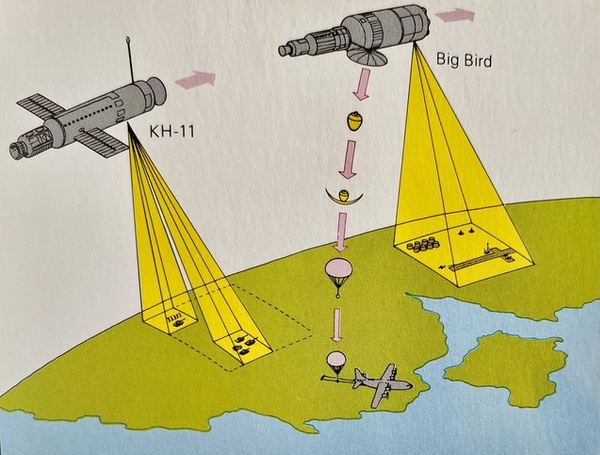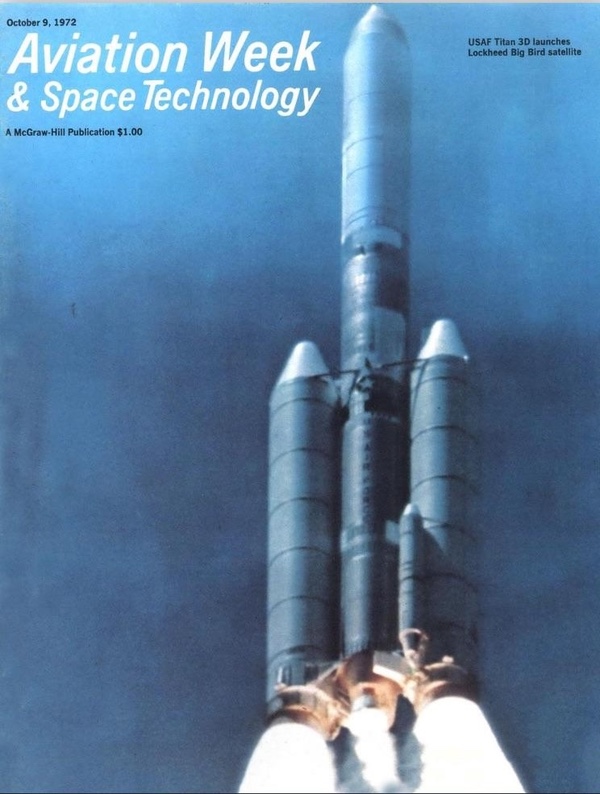Shhhhhh!!! Pay no attention to the Big Bird…by Dwayne A. Day
|
| There was no way to keep the large rocket secret—when it rose up over the low mountains, people in nearby Lompoc would see it, people to the south in Santa Barbara would see it, and people in much more populated Los Angeles would also probably see it. |
McLucas stated that the only official comment regarding the launch would be a post-launch announcement that a satellite employing the Titan IIID was launched from Vandenberg. No other questions would be answered and all the press would get was, “The payload is classified and no additional information can be provided.”
Queries related to the booster and safety aspects of the launch could be answered depending upon booster classification, but no dates or frequency of future launches would be discussed. The government and contractor personnel had been briefed about their own security obligations and the need for security.
McLucas ended his letter with “As you know there has been considerable speculation in trade journals that a ‘new super spy satellite’ will be launched in the near future. We have taken all possible precautions to insure that we in no way contribute to the existing press data base. While we cannot positively predict the extent or degree of news coverage, it is anticipated that it will be limited to the time frame immediately following the launch.”
  Artist illustrations of the "Big Bird" satellite that appeared in David Hobbs' 1986 book Space Warfare from Salamander Books Ltd. Hobbs' book was a good general overview of military space programs at the time, although it was limited by continued classification. The HEXAGON satellite looked nothing like the "Big Bird" in the illustrations, although HEXAGON did have four film reentry vehicles. (credit: Salamander Books Ltd.) |
Super spy satellite to HEXAGON to Big Bird
Concealed under the nose fairing of the Titan IIID was the first HEXAGON reconnaissance satellite, the most complex mechanical device ever flown in space. HEXAGON had two powerful cameras that rotated, sweeping the ground below, producing images that were long and thin and could cover vast amounts of territory at resolution good enough to determine tanks from trucks and transport planes from tankers. It was a marvel of modern engineering, and totally top secret.
Most of the NRO’s launches were from Vandenberg, which was a bit more isolated than Cape Kennedy. In another cable about a Cape launch, an NRO official noted that “we do have an enviable record for successfully launching from Kennedy under the worst of circumstances and getting away with it”—both CANYON and RHYOLITE signals intelligence satellites had been launched there with no apparent security leaks. But there were a lot more secret satellites launching from California.
| Thereafter, when other Titan IIIDs launched from California, people referred to them as “Big Bird satellites,” a term that appeared in the trade press and stuck into the 1980s. |
The day after McLucas wrote his letter, on June 15, 1971, the Titan IIID launched from Vandenberg. McLucas was right and the launch did get noticed, and some speculated that it was a reconnaissance satellite. However, there is no indication from contemporary sources that factual information about the payload—the large HEXAGON reconnaissance satellite—was leaked. Aviation Week & Space Technology reporter Phillip Klass wrote an article in August 1971 titled “Recon Satellite Assumes Dual Role,” claiming that the satellite had both film and readout capability, which was not correct. He apparently assumed the readout capability because he had recently learned of the development of a large diameter space-qualified satellite dish antenna. However, it was not associated with the HEXAGON satellite.
The secrecy surrounding the payload did have an interesting side effect, however. Lots of people at Vandenberg knew that the Titan IIID was being prepared for launch, but a much smaller number had knowledge of the payload. People at the base started to refer to the upcoming launch as “the big bird,” because it was the largest spacecraft to be launched from Vandenberg. This moniker stuck. Klass reported it in 1971. In September 1972, after the third launch, Phllip Klass wrote an article titled “Big Bird Nears Full Operational Status.” The rocket launch appeared on the cover of the magazine along with the words “Big Bird.”
Thereafter, when other Titan IIIDs launched from California, people referred to them as “Big Bird satellites,” a term that appeared in the trade press and stuck into the 1980s. Bill Yenne, in his 1985 book The Encyclopedia of American Satellites referred to the Big Bird. Curtis Peebles in his 1987 book Guardians had a chapter titled “Big Bird and KH-11”—the KH-11 was another satellite that used a similar rocket. David Hobbes’ nifty 1986 book Space Warfare had two artist illustrations of it, along with another artist depiction of the KH-11. None of them were accurate, although the Big Bird illustration included four film reentry vehicles, which was correct. The program was finally declassified in 2011, but even now new details about the program continue to be declassified by the government.
Despite the name appearing in many publications throughout the 1970s and 1980s, the HEXAGON was never officially referred to as the Big Bird, and many of those who worked on it avoided using the classified name entirely. Usually, they simply referred to it as “the item.” But there was no character named “The Item” on Sesame Street.
Note: we are now moderating comments. There will be a delay in posting comments and no guarantee that all submitted comments will be posted.
